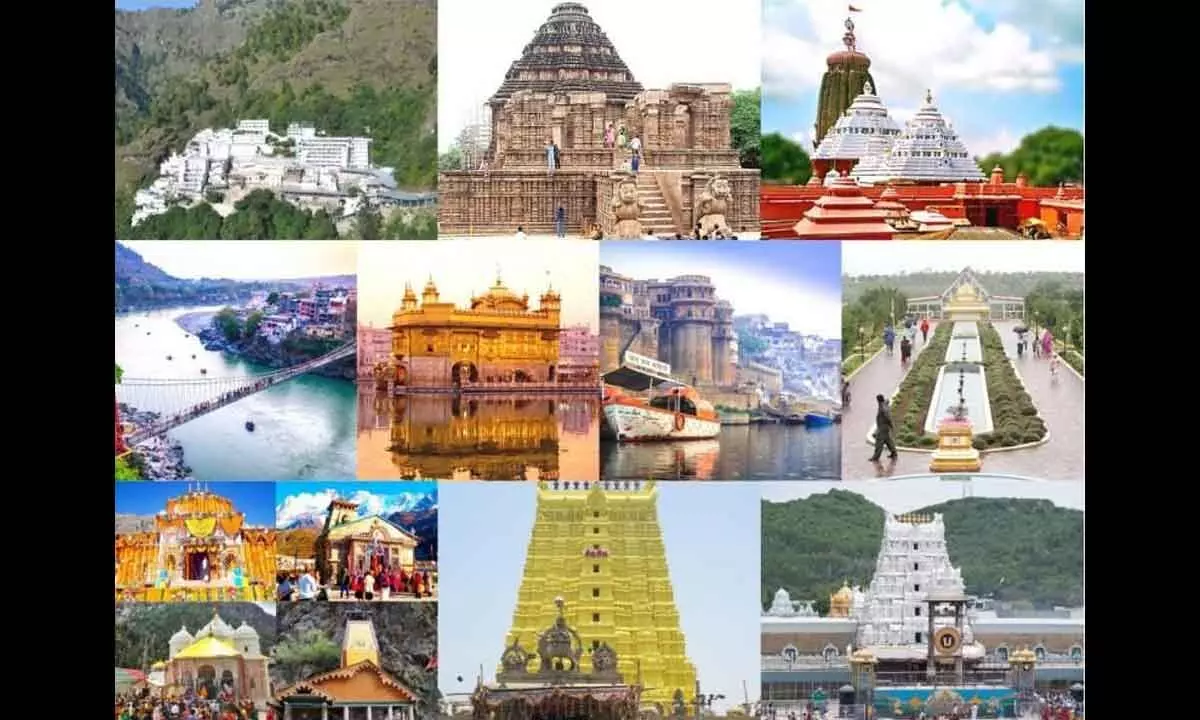Booming spiritual tourism accounts for 60% of India’s tourism footfall
Factors like social media, easy accessibility and cultural uniqueness boosting patronage
image for illustrative purpose

The hospitality industry has seen huge growth due to the demand for spiritual and religious tourism. Unlike in the earlier years, religious tourism is now attracting millenials and Gen Z, especially after Covid-19, according to industry experts. As spiritual tourism in India is growing immensely, the hospitality and tourism industry is aware that they cannot restrict themselves just to religion
Contrary to what the name denotes, pilgrimage tourism is not restricted to religion anymore. Gen Z and millenials seek mindfulness, silent retreats and spiritualism through it.
India is known as the land of many religions, dialects and cuisines. Religion has always played a huge role in the country’s development, economy and politics.
However, for the moment, let’s restrict ourselves to tourism. Many experts opine that social media, easy accessibility, unique cultural experiences and other factors have contributed to the rise of spiritual or religious tourism in India.
Temples, mosques, monasteries, Gurudwaras and places of worship and shrines of other faiths, draw millions of devout. From the holy ghats of Varanasi, to Bodh Gaya and Ajmer Sharif Dargah to the Golden Temple, pilgrimage tourism adds up to the economy of states and tourism boards.
The number of domestic tourists visiting pilgrimage places was 1,433 million in 2022 and 6.64 million foreign tourists. In 2021, the numbers stood at 677 million and 1.05 million, respectively. More than 60 per cent of the country’s tourism is associated with religious and spiritual outings.
According to data released by the Ministry of Tourism, pilgrimage tourism earned ₹ 1,34,543 crore in 2022 as compared to ₹ 65,070 crore in 2021.
Tourism experts say that in 2023, 70% of domestic travellers have shown interest in spiritual getaways, which include meditation and mindfulness.
Goa Tourism has plans to promote the state as the ideal spiritual destination. Its Tourism Minister Rohan A. Khaunte is keen on establishing Goa as a premier spiritual destination wherein visitors from all over the world could seek spiritual rejuvenation across various locations.
Direct flights from Mopa to Uttarakhand, Dehradun, Nagpur and Guwahati will bridge the travel divide between Uttarkashi and Dakshin Kashi, thereby enhancing connectivity and bring in more tourists to Goa.
Khaunte stated that a conclave being hosted in October will serve as a platform for engaging with influencers and stakeholders in the tourism industry. This conclave aims to build meaningful connections and foster collaboration to develop spiritual circuits, including yoga, wellness and other spiritual experiences.
A MOU was signed between the state government and Temple Connect, an organization dedicated to promoting spiritual tourism.
The upcoming Shiv Jayanti festival, which is to be celebrated on a grand note in six of its cities, will showcase the rich cultural heritage of Goa and their uniqueness.
He highlighted the active involvement of youth, yuva tourism clubs and students in promoting and preserving Goa’s spiritual identity. He emphasized the significance of engaging the younger generation in maintaining the authenticity and sanctity of all places of worship and spiritual sites.
In its bid to promote sports tourism, the Minister hinted at the likelihood of organising Ironman 70.3 (a distance in miles that includes triathlon disciplines-swimming, bike riding and a run). Through this, the government aims to boost sports tourism and attract athletes and enthusiasts from around the world.
Girish Kulkarni, founder of Temple Connect, said that “Digitizing content about temples and organizing events can help in documenting and preserving the rich cultural heritage of these sacred places. It also opens up new opportunities to showcase smart temple management practices and create awareness about the importance of temple conservation. By promoting exposure to important temples and historic sites, we can encourage tourism and contribute to the development of infrastructure and ecosystem in Goa. Additionally, increasing engagement through various activities can attract more visitors, thus boosting footfall to Goa.”
Goa’s tourism department has called upon people and organizations to support the government’s efforts in promoting Goa as a spiritual destination, given that the state is blessed with natural and cultural assets making for the perfect solace, wellness and enlightenment getaways.
The hospitality industry has seen huge growth due to the demand for spiritual and religious tourism. Unlike in the earlier years, religious tourism is now attracting millenials and Gen Z, especially after Covid-19, according to industry experts.
As spiritual tourism in India is growing immensely, the hospitality and tourism industry is aware that they cannot restrict themselves just to religion. Towards this, they have expanded into mindfulness, yoga and meditation and added adventure packages to cater to youngsters.
More and more customised tour packages are being introduced to cater to such travellers in places like Rishikesh, Katra, Varanasi, among others.

